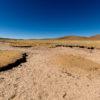The year 2017 marks the thirtieth anniversary of the first national study in the United States to correlate the siting of commercial hazardous waste facilities and communities of color—a revolutionary intervention that introduced the concept and, notably, the term “environmental justice.” In the years since the paradigm shift caused by the United Church of Christ’s report, Toxic Wastes and Race in the United States, scholarship highlighting the connections between race, class, and environmental burdens has remained both critical and necessary to understanding the links between humanity and the environment.
Here at the Social Science Research Council, between 1989 and 1998, the Global Environmental Change (GEC) program sought to address some of the intersections between poverty and the environment, among other matters. Items covered the GEC’s work, including a 2007/8 retrospective on the prescience of the program. But the GEC did not tackle environmental justice issues head-on. Building on its work, and on the growing attention to related issues across the social and environmental sciences in the ensuing years, this Items series engages “just environments” at a crucial moment in the United States and around the world.
As a global public increasingly scrutinizes and questions our shared environmental challenges, Items revisits the question of human impacts on the environment and environmental impacts on humanity. Recent events highlight the challenges that remain: ongoing battles to protect the Standing Rock Sioux Reservation’s water supply from a proposed oil pipeline herald a familiar tale of indigenous populations pitted against big industry. Across the global South, vulnerable populations experience the effects of climate change most directly.
How can we understand the tensions that persist? Given these tensions, is it possible to imagine more just environments and offer strategies for collective solutions? Over the last three decades, a rich body of social science research has theorized, analyzed, and critiqued intersectional inequities through the lens of environmental crises. Using a host of approaches, theories, and methodologies, scholars have examined the roots and consequences of environmental biases. Embedded throughout this work is the notion that more equitable alternatives exist.
The essays in this series build upon that research, reflecting on this potential for change, particularly with respect to contemporary environmental contestations. Together, they offer a diverse set of perspectives that uncover a range of pathways toward more just environments.













